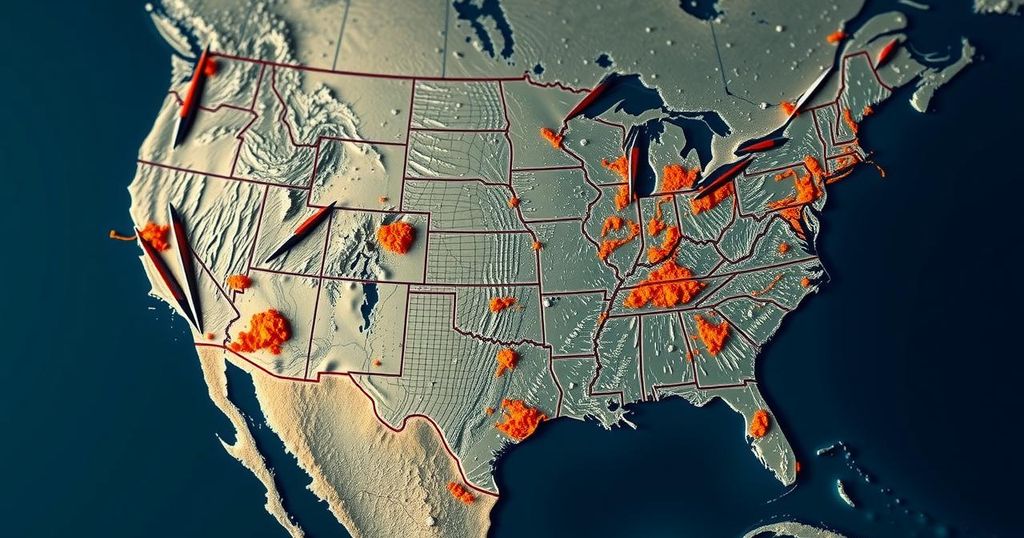Recent Earthquake Activity Highlights Global Seismic Risks

A 4.4-magnitude earthquake was recorded in California on November 7, preceded by other significant quakes in Greece, Hawaii, and Missouri. The USGS reported numerous felt experiences from the California earthquake, indicating active seismic activity in various regions. The report emphasizes the need for ongoing monitoring and preparedness against such natural events.
On November 7, a 4.4-magnitude earthquake struck Borrego Springs, California, reported by the United States Geological Survey (USGS). Its depth was measured at approximately 9.8 kilometers (six miles), and the USGS noted that there were 257 reports of inhabitants feeling the quake. This event followed a series of seismic activities across various regions, including a 4.4-magnitude earthquake in Greece just two days earlier, which was centered in Chalandrítsa at a depth of 82.3 kilometers (about 51.1 miles). In addition to these occurrences, on the same day as the California quake, a 4.8-magnitude earthquake also rattled Pāhala, Hawaii, at a depth of 38.4 kilometers (about 23.9 miles). Prior to these events, a 3.3-magnitude earthquake was recorded in Anza, California, on November 4. Notably, multiple earthquakes transpired over the preceding weekend; for instance, a 4.3-magnitude earthquake occurred in La Serena, Chile, and a 3.7-magnitude earthquake was reported in Steele, Missouri. The seismic activity continued with a significant 5.3-magnitude earthquake in Greece, centered in Néa Poteídaia at a depth of 10.0 kilometers (about 6.2 miles) on the same Sunday. This series of earthquakes also followed a considerable 6.0-magnitude tremor in Oregon, reported on October 30, centered in Windsor. Furthermore, earthquakes in Lompoc, California, frequently manifested over several days, including a 3.6-magnitude event shortly after two previous quakes on October 28. The overall frequency of earthquakes suggests an active geological period affecting several regions across the globe, indicating the need for ongoing monitoring and research on seismic activities as populations remain at risk from such natural events.
Earthquakes are a natural geological phenomenon resulting from the movement of tectonic plates beneath the Earth’s surface. Various regions, particularly those located near fault lines, are prone to seismic activity, which can manifest as minor tremors or significant quakes. The US Geological Survey is instrumental in monitoring these events, providing vital data that helps inform the public and aid in preparedness efforts. Recently, several earthquakes have occurred in rapid succession not only in California but also in different regions worldwide, prompting discussions on earthquake preparedness and safety protocols.
In summary, the recent series of earthquakes highlights the dynamic and occasionally treacherous nature of our planet’s geology. The noteworthy 4.4-magnitude tremor in California, alongside other significant seismic events around the globe, calls attention to the importance of continued research and preparedness for such natural occurrences. The data gathered from these incidents will contribute to understanding seismic patterns and improving response strategies.
Original Source: www.wlac.com








